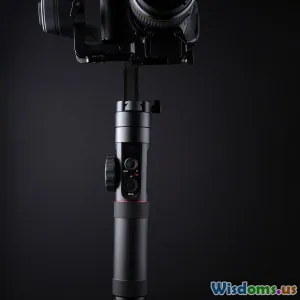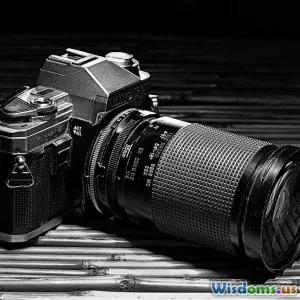
Ten Mistakes to Avoid When Creating Your First VFX Shot
8 min read Discover the top ten mistakes to avoid when creating your first VFX shot to ensure a smooth, professional result from the start. (0 Reviews)
Ten Mistakes to Avoid When Creating Your First VFX Shot
Visual effects (VFX) can transform ordinary footage into breathtaking cinematic magic. For many emerging artists and filmmakers, creating that first VFX shot is an electrifying but daunting endeavor. Understanding common pitfalls early on can save countless hours of frustration and elevate the quality of your final piece.
In this comprehensive guide, we explore ten critical mistakes novices often make during VFX shot creation, illustrated with real-world examples and professional insights. Whether you’re a hobbyist or aspiring pro, avoiding these errors will set the foundation for more convincing, impactful effects.
1. Skipping Pre-Production Planning
One of the biggest rookie blunders is jumping straight into software without charting out your shot plan. Proper pre-production involves storyboarding, concept art, and technical planning — defining what you want to achieve visually and how.
Why It Matters
In the blockbuster "Doctor Strange" (2016), intricate previsualization was essential to coordinate mind-bending VFX sequences. Without this groundwork, you'll encounter workflow inefficiencies and unclear objectives.
How to Avoid
- Draft a detailed storyboard
- List required assets and effects
- Consider logistics: scene duration, camera moves, and compositing needs
2. Not Matching Camera Motion
When integrating VFX elements with live footage, failing to replicate the original camera’s motion breaks immersion. Misaligned motion tracking causes effects to float unnaturally or jerk out of place.
Real-World Insight
At Industrial Light & Magic, experts spend significant time solving camera tracking because imperfect matches are a common giveaway of synthetic elements.
Pro Tip
Use high-quality footage containing clear tracking points and employ software like Adobe After Effects’ 3D Camera Tracker or PFTrack for accurate motion replication.
3. Ignoring Lighting and Shadows
Light defines realism. Not matching lighting conditions or neglecting shadow casting renders effects fake instantly.
Example
In "The Lord of the Rings" trilogy, Weta Digital meticulously simulated natural light and shadow interplay, anchoring fantasy creatures believably in live-action shots.
Recommendations
- Analyze lighting direction, intensity, and color temperature from plate footage
- Use HDRI maps for environment lighting
- Simulate shadows with ray-traced rendering techniques
4. Overcomplicating in the First Attempt
Ambition can be a double-edged sword. Newcomers may overload renders with excessive detail or effects that their hardware and knowledge cannot manage.
Consequence
This leads to long render times, crashes, or low-quality outputs due to rushed shortcuts.
Smart Approach
Start simple with a manageable shot. Master core techniques such as keying, tracking, and compositing before escalating complexity.
5. Neglecting Proper Asset Organization
Disorganized project files, texture maps, and version saves create chaos that slows down creativity and troubleshooting.
Insight
Large VFX studios like Framestore maintain strict asset naming conventions and storage hierarchies, easing collaboration and pipeline efficiency.
Best Practices
- Establish a clear folder structure
- Name your files descriptively
- Maintain version control to track revisions
6. Forgetting to Check Render Settings
Incorrect render parameters lead to grainy, pixelated, or saturated images.
Notable Example
Early fan VFX projects often fail because they export without adjusting anti-aliasing, resolution, or output formats — compromising final quality.
How To
- Always render test frames before the full shot
- Verify resolution matches your footage
- Choose appropriate bit depth and color profiles
7. Underestimating the Importance of Color Grading
Color mismatches can ruin a coherent shot. The VFX should harmonize subtly with original footage to avoid standing out.
Pro Insight
Colorist Stefan Sonnenfeld emphasized, "Seamless color integration is as vital as perfect tracking — it's what tricks the eye."
Tips
- Use scopes (waveform, vectorscope) to match exposure and color balance
- Employ lookup tables (LUTs) tailored to your project
8. Overlooking the Power of Feedback
Avoid working in isolation. Many beginners are hesitant to show early work, missing valuable perspectives.
Why Feedback Matters
Fresh eyes catch inconsistencies and offer suggestions that improve realism and impact.
Suggestion
Join online VFX communities like the Foundry Forums or Reddit’s r/vfx to share progress and gather input.
9. Neglecting Compositing Fundamentals
Poor compositing ruins the integration of layers and effects. Issues such as incorrect depth of field, edges, or interaction with the scene break illusion.
Industry Practice
Companies like MPC dedicate entire teams just to compositing—to refine lighting balance, edge blending, and subtle details.
Key Steps
- Use matte chokes and edge blur effectively
- Add subtle environmental effects (dust, lens flare)
- Align depth of field and motion blur convincingly
10. Giving Up Too Soon
VFX creation is a learning curve. Many novices abandon projects mid-way due to frustration or unrealistic expectations.
Inspirational Example
VFX legend John Knoll advises, "Every great effect you see started as a series of small failures. Perseverance is key."
Encouragement
Break your work into smaller tasks, celebrate milestones, and continuously review your progress to stay motivated.
Conclusion
Creating your first VFX shot is an exciting baptism by fire—packed with technical challenges and creative discoveries. Avoiding the ten mistakes outlined above ensures you not only save time and resources but also develop foundational skills for a successful VFX journey.
Remember: Methodical planning, matching lighting and motion, managing assets, polished compositing, and seeking feedback are your cornerstones. Coupled with patience and persistence, these strategies will transform you from a novice to a confident VFX artist.
So, gear up, refine your techniques, and unleash your visual storytelling prowess one flawless shot at a time!
Additional Resources:
Rate the Post
User Reviews
Other posts in Visual Effects (VFX)
Popular Posts
















